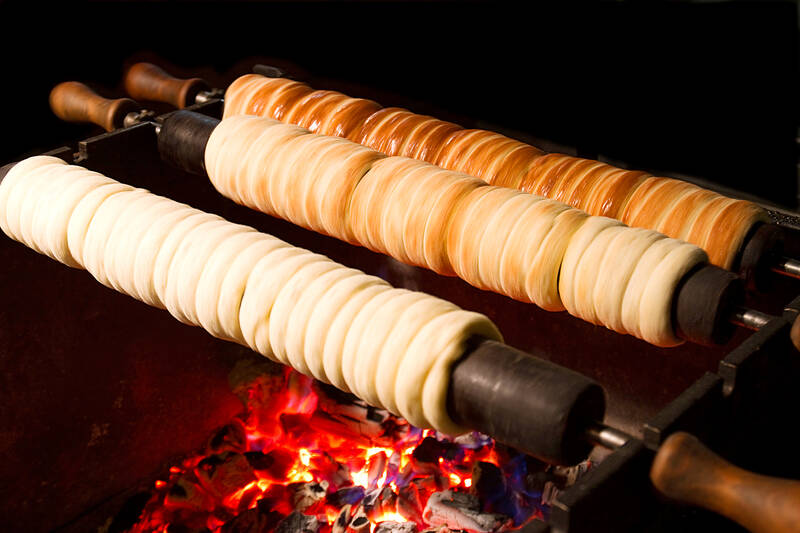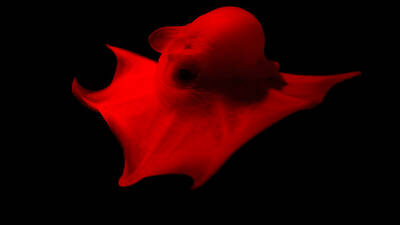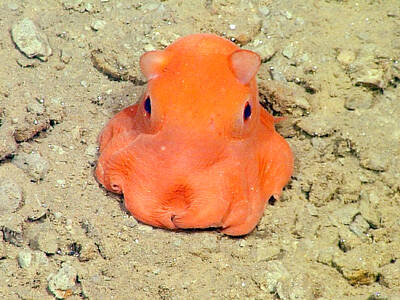The chimney cake is a beloved treat with a rich history in Hungary and Romania. While written references to the cake appeared as early as the late 17th century, the earliest known recipe from 1784 is __1__ a noblewoman named Maria Mikes, who wrote about dough wrapped around a spit. Legend has it, however, that the existence of this delicacy actually goes much further back in time, to the Mongol invasion of the 13th century.
The cake’s iconic hollow, cylindrical shape, which is reminiscent of a chimney, is achieved by wrapping yeast dough around a wooden spit and roasting it over an open flame. Throughout the cooking process, the dough is basted with melted butter, rolled in sugar, and cooked __2__ it develops a caramelized, crispy exterior. The distinctive hollow shape of the cake is formed as it rotates on the spit, allowing the dough to cook __3__ and develop its unique texture.
Today, the chimney cake can be customized with various toppings and fillings. Common toppings include ground walnuts, cinnamon, chocolate, or even shredded coconut. This variety ensures that there is a chimney cake to suit nearly every taste. The cake’s crunchy outer shell provides a __4__ to its soft, fluffy interior, contributing to its enduring popularity at street fairs and markets across Hungary and Romania. __5__ these countries, be sure to seize the opportunity to sample this delectable treat. With its unique and delightful flavor, you are sure to be enchanted by this culinary gem that has won the hearts of many who have tried it.

Photo: AdobeStock 照片:AdobeStock
煙囪捲是一道受人喜愛的甜點,在匈牙利和羅馬尼亞有著悠久的歷史。雖然有提到此款蛋糕的文字記載早在十七世紀晚期就出現了,但最早已知的食譜是來自1784年一位名為瑪麗亞‧邁克斯的貴族,她寫下了關於被包裹在細棍上麵團的文字。不過,傳說這道美食的存在實際上可追溯回更久以前,一直到十三世紀的蒙古入侵。
煙囪捲標誌性的圓柱中空狀讓人聯想到煙囪,是透過將發酵麵團包裹在木棍上,並在明火上烤製而成。在烤製過程中,會在麵團上塗抹融化的奶油、裹上糖,接著將麵團烤到外皮焦糖化且變得酥脆為止。這種蛋糕獨特的中空外觀在它於細棍上旋轉時形成,這讓麵團能夠均勻地烘烤,並發展出獨特的口感。
如今,煙囪捲可以加入各式各樣的配料和內餡進行客製化。常見的配料包括碎核桃、肉桂、巧克力,或甚至是椰絲。這種多樣性確保了總是會有幾乎符合每種口味喜好的煙囪捲。此種蛋糕的酥脆外殼與內部的柔軟蓬鬆形成了和諧的對比,這也是它在匈牙利和羅馬尼亞的街頭市集和市場上持續受歡迎的原因之一。如果你有機會造訪這些國家,務必要把握機會品嚐這款美味的甜點。它獨特且令人愉悅的風味,必定會讓你愛上這道美味珍寶,它已擄獲眾多嚐過者的芳心。

Photo: AdobeStock 照片:AdobeStock
What Did You Learn?
1. (A) opposed of (B) extracted from
(C) attributed to (D) immersed in
2. (A) what (B) until
(C) since (D) although
3. (A) barely (B) formally
(C) oddly (D) evenly
4. (A) harmonious contrast
(B) delicate advance
(C) conventional appearance
(D) profitable creation
5. (A) If you have visited
(B) Had you visited
(C) While you were visiting
(D) Should you visit
答案:
1. C 2. B 3. D 4. A 5. D
Words in Use
1. reference n. 提到,言及
The speaker made reference to some events of the past year. 演講者提到去年發生的一些大事。
2. existence n. 存在
These ruins testify to the existence of an ancient civilization. 這些廢墟證實了一個古文明的存在。
3. invasion n. 入侵,侵略
All the people in the city got together to defend against the invasion of enemy troops.
這座城市裡的所有人民都集結起來一起抵禦敵軍入侵。
4. reminiscent a. 引人聯想的
be reminiscent of. . . 讓人聯想到……
This horror film is reminiscent of Alfred Hitchcock’s movies.
這部恐怖片讓人聯想起亞佛烈德.希屈考克的電影。
5. rotate vi. 旋轉,轉動
Stay away from the helicopter when its blades start to rotate. 當直升機葉片開始轉動時,離遠一些。
Practical Phrases
1. Legend has it + that 子句 據說……
Legend has it that a group of magical elves lives in the middle of this forest.
據說這座森林的中心住著一群魔法小精靈。
2. contribute to N/V-ing 促成∕導致……
Eating fast food all the time contributed to Rick’s weight gain.
一直都在吃速食導致瑞克發胖。
聽文章朗讀及講解: https://ivy.pse.is/455bfu
本文出自常春藤解析英語雜誌: www.ivy.com.tw

The deep waters off the coast of California are home to a bizarre creature: the flapjack octopus. This creature, known for its pancake-like appearance, spreads itself thin on the seabed as a clever survival strategy, making it difficult for predators to spot and capture it. With its unique, umbrella-shaped body formed by webbed arms, the flapjack octopus moves through the water in a graceful manner. It propels itself forward by rhythmically moving its body and contracting its webbed arms. Its pair of ear-like fins, which move independently yet with remarkable coordination, also help it explore the deep-sea environment. These

Bilingual Story is a fictionalized account. 雙語故事部分內容純屬虛構。 I stand by the Miluo River as dusk falls. The court betrayal is too much. I served Chu with loyalty. I forged alliances and fought corruption. But the whispers of jealous courtiers, the murmurs of treason, spoke louder. The king cast me out. The water looks calm. It promises peace. I step in. The river is cold against my legs. I hear shouts behind me — fishermen calling my name. I keep walking. The calls grow louder, but I do not turn around. The water rises to my chest. It pulls at me. I

In Taiwan, people can use a platform to rent a power washer for a weekend or share unused garage space for someone’s storage needs. These are examples of the sharing economy, a consumption model that has gained widespread adoption worldwide. This approach allows people to rent or share assets like cars, homes or even services, typically through online platforms. This innovative model poses a simple yet powerful question: why purchase infrequently used items when sharing is more practical? By making useful but idle resources accessible, the sharing economy turns them into sustainable opportunities. Internationally, platforms like Airbnb and Uber have popularized

Continued from yesterday(延續自昨日) https://www.taipeitimes.com/News/lang Many people may be familiar with flapjack octopuses thanks to Pearl, a charming character from the Pixar film Finding Nemo. However, her portrayal presents several scientific inaccuracies. In reality, flapjack octopuses are deep-sea creatures, which are unsuitable for the brightly lit shallow reef environment depicted in the film. Their primary defense mechanism relies on their reddish coloration, which would be ineffective in the well-lit shallows. Pearl’s famous line, “You guys made me ink,” is another fictional detail that is not consistent with the observed actions of real flapjack octopuses. As common as it is in many other octopus